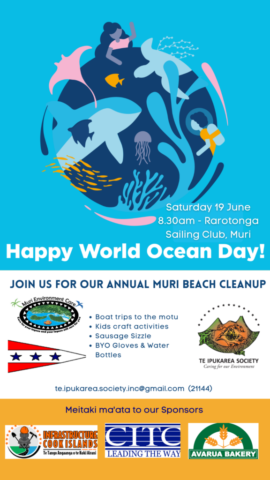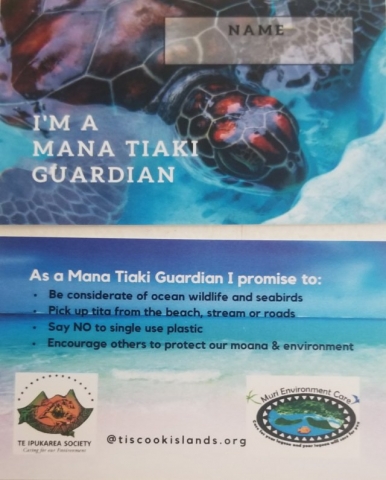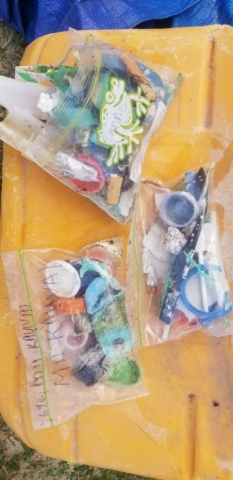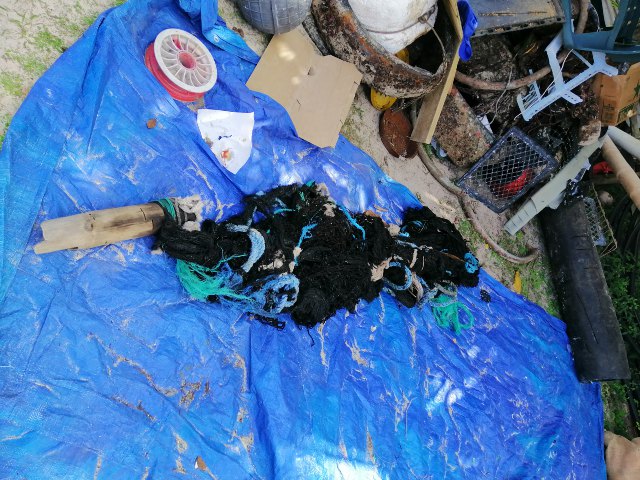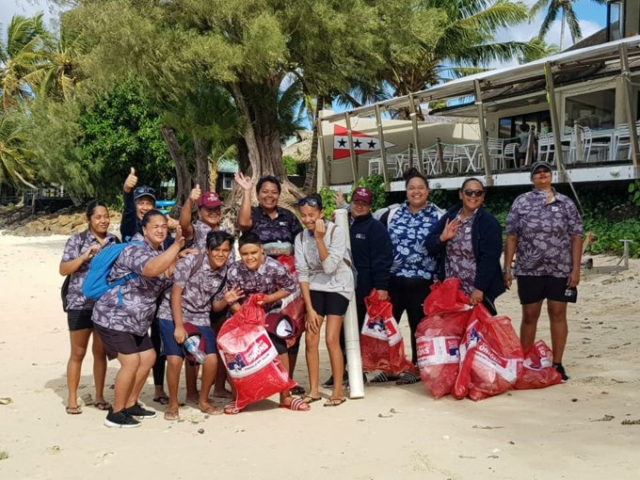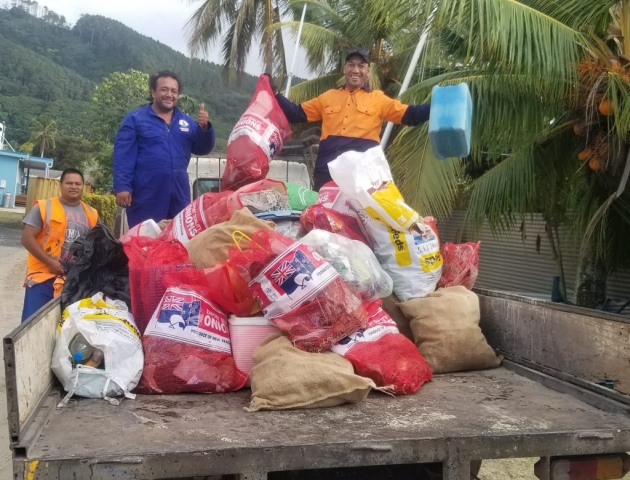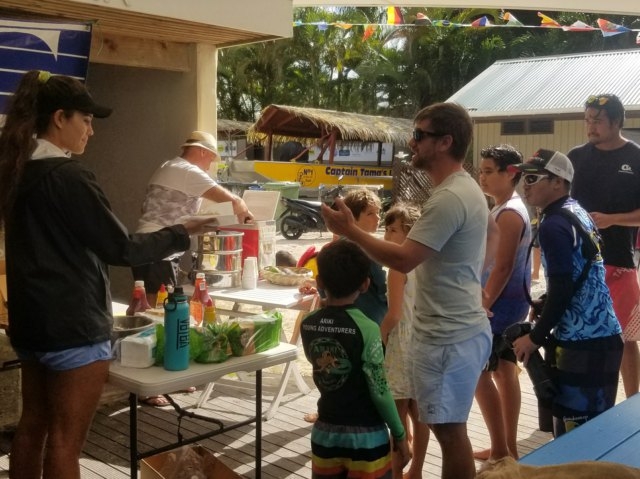News Articles
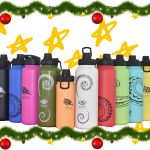 Don’t get wasted this ChristmasDecember 8, 2025Don’t get wasted this Christmas The festive season brings joy, family get-togethers, and memorable celebrations for many of us in the Cook Islands. […]
Don’t get wasted this ChristmasDecember 8, 2025Don’t get wasted this Christmas The festive season brings joy, family get-togethers, and memorable celebrations for many of us in the Cook Islands. […]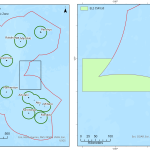 Questions mount as mining company exits Cook IslandsDecember 1, 2025Questions mount as mining company exits Cook Islands Several months ago, rumours were circulating at the International Seabed Authority meeting in […]
Questions mount as mining company exits Cook IslandsDecember 1, 2025Questions mount as mining company exits Cook Islands Several months ago, rumours were circulating at the International Seabed Authority meeting in […]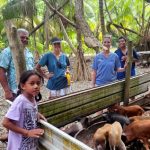 Northern Group Islands Veterinary TrekNovember 24, 2025A Journey of Collaboration, Care, and Community Earlier in November, Dr Katie Bird and I had the privilege of representing Te Are Manu on a […]
Northern Group Islands Veterinary TrekNovember 24, 2025A Journey of Collaboration, Care, and Community Earlier in November, Dr Katie Bird and I had the privilege of representing Te Are Manu on a […]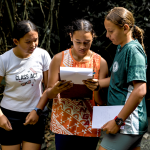 Youth RangersNovember 17, 2025Youth Rangers lead the call for stream protection On October 31, 2025, a group of Apii Te Uki Ou students were a part of a project development called […]
Youth RangersNovember 17, 2025Youth Rangers lead the call for stream protection On October 31, 2025, a group of Apii Te Uki Ou students were a part of a project development called […]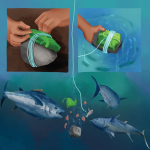 A question of faith and creation careNovember 10, 2025Deep Sea Mining: A question of faith and creation care In the Cook Islands, Deep-Sea Mining (DSM) has sparked debate—not just in politics and […]
A question of faith and creation careNovember 10, 2025Deep Sea Mining: A question of faith and creation care In the Cook Islands, Deep-Sea Mining (DSM) has sparked debate—not just in politics and […]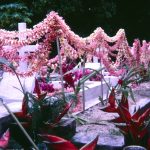 A grave concernNovember 4, 2025A grave concern Every year, as the first of November arrives, many in the Cook Islands pause for a solemn and beautiful occasion known as Turama. […]
A grave concernNovember 4, 2025A grave concern Every year, as the first of November arrives, many in the Cook Islands pause for a solemn and beautiful occasion known as Turama. […]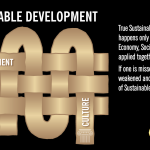 Sustainable DevelopmentOctober 27, 2025A contradiction in practice? The phrase sustainable development suggests sensible progress — meeting today’s needs without harming the ability of […]
Sustainable DevelopmentOctober 27, 2025A contradiction in practice? The phrase sustainable development suggests sensible progress — meeting today’s needs without harming the ability of […]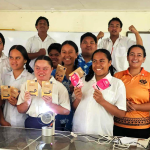 Teaching teens the value of reusableperiod productsOctober 20, 2025Teaching teens the value of reusable period products Towards the end of September, Te Ipukarea Society’s Project Officer, Akeina (Ake) Tairea, […]
Teaching teens the value of reusableperiod productsOctober 20, 2025Teaching teens the value of reusable period products Towards the end of September, Te Ipukarea Society’s Project Officer, Akeina (Ake) Tairea, […]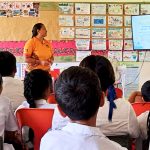 Citizen Science turtle trackingOctober 13, 2025Citizen Science turtle tracking reaches the shores of Maʻuke Te Ipukarea Society’s Project Officer Akeina Tairea had a valuable opportunity to work […]
Citizen Science turtle trackingOctober 13, 2025Citizen Science turtle tracking reaches the shores of Maʻuke Te Ipukarea Society’s Project Officer Akeina Tairea had a valuable opportunity to work […]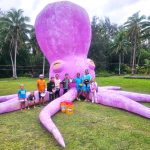 Maʻuke welcomes Tumu the octopusOctober 6, 2025Maʻuke welcomes Tumu the octopus and raises awareness for Ocean Protection It’s been a busy and exciting week on the island of Maʻuke. Not only did […]
Maʻuke welcomes Tumu the octopusOctober 6, 2025Maʻuke welcomes Tumu the octopus and raises awareness for Ocean Protection It’s been a busy and exciting week on the island of Maʻuke. Not only did […]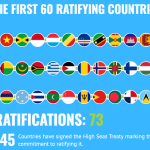 Protecting biodiversity in the High SeasSeptember 29, 2025The Cook Islands’ journey towards protecting biodiversity in the High Seas Last week, Morocco ratified the “Conservation and Sustainable Use of […]
Protecting biodiversity in the High SeasSeptember 29, 2025The Cook Islands’ journey towards protecting biodiversity in the High Seas Last week, Morocco ratified the “Conservation and Sustainable Use of […]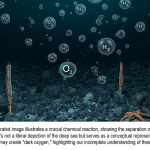 The dark truth about the deep seaSeptember 22, 2025Why we need a mining moratorium The deep sea is sometimes viewed as a barren wasteland. However, a recent discovery, the production of ‘dark oxygen’, […]
The dark truth about the deep seaSeptember 22, 2025Why we need a mining moratorium The deep sea is sometimes viewed as a barren wasteland. However, a recent discovery, the production of ‘dark oxygen’, […]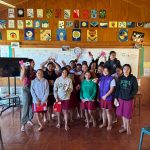 Reusable Hygiene ProductsSeptember 15, 2025Reusable Hygiene Products for a Healthier Environment and Future Te Ipukarea Society has kick started again, a holistic women’s health and […]
Reusable Hygiene ProductsSeptember 15, 2025Reusable Hygiene Products for a Healthier Environment and Future Te Ipukarea Society has kick started again, a holistic women’s health and […]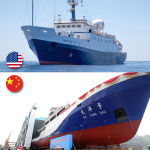 Seabed mining in the Cook IslandsSeptember 9, 2025Playing with the big boys The Cook Islands has an enormous amount of valuable minerals, contained in what are known as polymetallic nodules, on its […]
Seabed mining in the Cook IslandsSeptember 9, 2025Playing with the big boys The Cook Islands has an enormous amount of valuable minerals, contained in what are known as polymetallic nodules, on its […]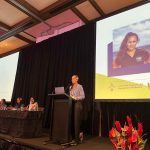 Te Ipukarea Society speaks outSeptember 1, 2025Te Ipukarea Society speaks out at regional United Nations environment meeting This past week Alanna Smith, director of Te Ipukarea Society, attended […]
Te Ipukarea Society speaks outSeptember 1, 2025Te Ipukarea Society speaks out at regional United Nations environment meeting This past week Alanna Smith, director of Te Ipukarea Society, attended […]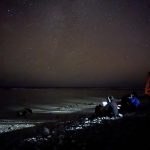 Empowering communitiesAugust 26, 2025Sharing seabird monitoring techniques A new seabird monitoring initiative, Manu Tai o te Kūki ʻĀirani, launched earlier this year to better […]
Empowering communitiesAugust 26, 2025Sharing seabird monitoring techniques A new seabird monitoring initiative, Manu Tai o te Kūki ʻĀirani, launched earlier this year to better […]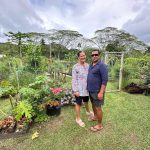 Mana TiakiAugust 18, 2025Our heritage, our stand, our future The Cook Islands’ recent agreements with China and the United States to conduct deep-sea mining research are not […]
Mana TiakiAugust 18, 2025Our heritage, our stand, our future The Cook Islands’ recent agreements with China and the United States to conduct deep-sea mining research are not […]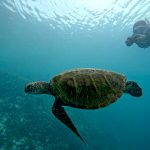 Turtle Trackers in TrainingAugust 13, 2025GROW Aitutaki youth Dive into Conservation This article is written by a GROW Aitutaki representative on the group’s recent turtle monitoring […]
Turtle Trackers in TrainingAugust 13, 2025GROW Aitutaki youth Dive into Conservation This article is written by a GROW Aitutaki representative on the group’s recent turtle monitoring […]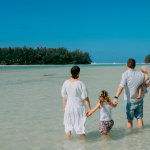 Plastic-Free July: Are We Doing Enough?August 5, 2025Lessons from an eco-conscious visitor For the past couple of weeks, we’ve focused on “Defend the Deep” messaging. The deep ocean is […]
Plastic-Free July: Are We Doing Enough?August 5, 2025Lessons from an eco-conscious visitor For the past couple of weeks, we’ve focused on “Defend the Deep” messaging. The deep ocean is […]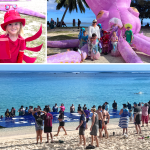 Ocean Lovers UniteJuly 28, 2025Ocean Lovers Unite against Deep-Sea Mining On 19th and 20th July, ocean lovers worldwide rallied against deep-sea mining, a destructive industry […]
Ocean Lovers UniteJuly 28, 2025Ocean Lovers Unite against Deep-Sea Mining On 19th and 20th July, ocean lovers worldwide rallied against deep-sea mining, a destructive industry […]
Vaka Diaries
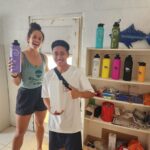 Connecting students with their future – careers day 2024June 24, 2024Connecting students with their future – careers […]
Connecting students with their future – careers day 2024June 24, 2024Connecting students with their future – careers […]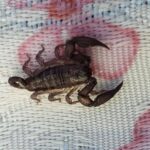 Scorpions of the Cook IslandsSeptember 20, 2023Scorpions of the Cook Islands Who would have thought […]
Scorpions of the Cook IslandsSeptember 20, 2023Scorpions of the Cook Islands Who would have thought […]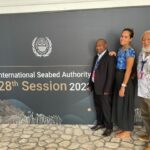 Looking deeper into the International Seabed AuthorityJuly 24, 2023Looking deeper into the International Seabed Authority […]
Looking deeper into the International Seabed AuthorityJuly 24, 2023Looking deeper into the International Seabed Authority […] Looking deeper into the International Seabed AuthorityJuly 18, 2023Looking deeper into the International Seabed Authority […]
Looking deeper into the International Seabed AuthorityJuly 18, 2023Looking deeper into the International Seabed Authority […]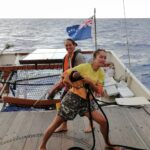 First Voyaging ExperienceOctober 2, 2021Terena Koteka-Wiki shares her recent voyaging […]
First Voyaging ExperienceOctober 2, 2021Terena Koteka-Wiki shares her recent voyaging […]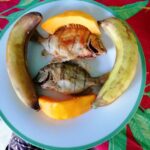 Tāua e Moana Vaka Blog – Leaving Pukapuka for SuwarrowJuly 24, 2021Kelvin Passfield – Leaving Pukapuka for Suwarrow […]
Tāua e Moana Vaka Blog – Leaving Pukapuka for SuwarrowJuly 24, 2021Kelvin Passfield – Leaving Pukapuka for Suwarrow […]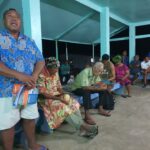 Pukapuka Ocean Health Presentation July 2021July 17, 2021
Pukapuka Ocean Health Presentation July 2021July 17, 2021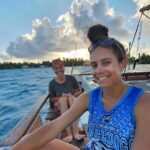 Tāua e Moana Vaka Blog – Nassau so close!July 7, 2021Alanna Smith – So close to Nassau but not just […]
Tāua e Moana Vaka Blog – Nassau so close!July 7, 2021Alanna Smith – So close to Nassau but not just […]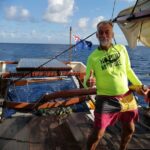 Tāua e Moana Vaka Blog – Leaving AitutakiJune 24, 2021Kelvin Passfield – Leaving Aitutaki for […]
Tāua e Moana Vaka Blog – Leaving AitutakiJune 24, 2021Kelvin Passfield – Leaving Aitutaki for […] Taua e Moana Vaka Blog – 2 days out from AitutakiJune 22, 2021Alanna Smith – Whale sighting out from Aitutaki […]
Taua e Moana Vaka Blog – 2 days out from AitutakiJune 22, 2021Alanna Smith – Whale sighting out from Aitutaki […]
Tanga’eo takes the Manu Crown
Published 18 November 2020
 These past two weeks has had everyone in a flap, as Cook islanders flocked to the online polls to vote for our first ever Bird of the Year Cook Islands competition.Widely agreed to be the most important election of the year, this hotly contested, battle of the birds had it all. Intense rivalry, cheating and inflated egos, things got quite competitive as people campaigned for their favourite manu.
These past two weeks has had everyone in a flap, as Cook islanders flocked to the online polls to vote for our first ever Bird of the Year Cook Islands competition.Widely agreed to be the most important election of the year, this hotly contested, battle of the birds had it all. Intense rivalry, cheating and inflated egos, things got quite competitive as people campaigned for their favourite manu.
Feathers got ruffled early on, when we realised that hundreds of fraudulent votes had been cast for two birds, the Kōpeka (Atiu Swiftlet) and the ‘Ī’oi (Rarotongan Starling). With the competition being bright and showy, it was the breakneck rise to the top of the pecking order for these two, quiet, unassuming birds that first raised our suspicions.
Thanks to the safe hands of our volunteer Peter Huckle, we quickly traced the suspect votes to offshore IP addresses in Turkey and Brazil. Peter had corrected and protected the voting system before accusations of cheating could be filed.
We also discovered that those same hacksters had later directed their mischief towards NZ’s Kiwi pukupuku. Like the Kōpeka, the little spotted kiwi enjoyed some short-lived glory in the top spot, having benefitted from illegal voting in the wee smalls.
The Mangaian community showed some serious spirit, as they rallied behind their much loved Tanga’eo. This kingfisher (which strangely prefers bugs to fish) is found nowhere else in the world except Mangaia and took the crown by an astonishing 1364 votes. Over 900 more votes than the next bird.
A tense, last minute rush from the Atiu enuamanu supporters, made for a nail biting finish for second place. This catapulted the Kura (Rimatara Lorikeet) ahead of the Kūkupa to claim the silver medal at the 11th hour.
Compared to the NZ version, ours was an unsophisticated first attempt campaign. But it still means a lot of work behind the scenes for those running the birds’ social media accounts. Luckily for us some self-appointed bird nerds stepped up to launch mini campaigns for their personal faves.
Ani O’Neill chose to support the colourful Kūkupa which came out of the gates fighting and came in a strong 3rd to finish. Pouarii Tanner threw her weight behind Aitutaki’s Kuramo’o (Blue Lorikeet) at one point demanding that we “Stop the count! The cute little Kuramo'o has been robbed!”. But this little nunbird held its own and came in a very respectable 5th place.
Long-time ‘Ī’oi advocate, Ana Tiraa adopted the cause with enthusiasm. Ana took to social media to convince voters to endorse the shy, starling once so common in Rarotonga, but which now hides in the hills. Ana coerced her family and friends into giving each of their 5 votes to the ‘Ī’oi. Gracious in defeat, Ana was first to congratulate the Tanga’eo on its comprehensive win and vowed “to campaign harder next year”.
Alanna Smith from Te Ipukarea Society put her money on the Kura. With ties to Atiu, Alanna has a particular affinity for the bird and chose to dress as the Kura bird in her Miss Cook Islands campaign. The Kura became locally extinct in Atiu 200 years ago but thankfully a population in Rimatara survived and was translocated back, now thriving in a land blessed without ship rats and myna birds.
But in the end, no bird could compete with the mass campaign of the chunky little Tanga’eo run by the passionate Mangaian people. The Mangaian community Facebook pages were on fire last weekend! What a lucky wee manu.
Youngsters get involved with world wetlands day 2022
Youngsters get involved with world wetlands day 2022
Article by: Gabriella Napa
On Wednesday 02 February a number of young Cook Islanders gathered to investigate and research about our wetlands behind Pa Ariki Palace in Ngatangia. Groups from different organisations came together to acknowledge the importance of our wetland environments. Muri Environmental Care, Te Ipukarea Society, and training teachers from the Ministry of Education. All collaborated to conduct research based on three themes; Plant life, insect life and water quality. The Youth Media Team were there to capture all the action to share and raise awareness.
Investigations conducted looked at what life lives in our wetland waterways, where insects live around our wetland waters such as Dragonflies and Damselflies, plants such as Tiemu, two types of wetland taro and water netting. An interesting point to note is names for one thing may differ from island to island, for example- Manaura Taro on Rarotonga is known as Taro Rakahanga on Rakahanga.
Young researchers had heaps of fun chasing dragonflies with nets and collected samples of plants, insects and water using numerous methods including; locating, collecting, measuring, mixing, identifying and photographing. Names of plants were entered into online sites to get their scientific name and read more information about them. Insect colours and characteristics were used to identify them against others online.
Testing the pH of soil was interesting to observe Ara and Pipi, two keen young environmentalists take part in. They added white vinegar to one sample and bubbles came up meaning the dirt was acidic. They added baking soda to the other and there was no reaction. A fizzing reaction means the soil has a basic alkaline pH level, and our wetlands need both for different organisms to thrive.
It was amazing seeing everyone enjoying themselves, laughing while researching and exploring topics that can sometimes be boring to learn about for youth. Especially as the young ones got the opportunity to really get involved and do the research themselves. There were hilarious moments watching the youth media team attempt to catch dragonflies themselves, only to capture one another in their nets!
Ecologist, Brennan Panzarella, who was running the event from MEC said ‘’ We had a blast getting to know one of Rarotonga's many wetlands in greater detail. Through discovering and identifying species of plants and dragonflies in the wetland, we hope the attendees were left inspired by what they saw and experienced. We also played around with some scientific tools and ways of thinking. Wetlands are important features in the landscape that provide numerous beneficial services for people, fish and wildlife. Some of these services or functions include protecting and improving water quality, providing fish and wildlife habitats, storing floodwaters and maintaining surface water flow during dry periods’’.
Allana from Te Ipukarea Society said ‘’Te ipukarea society is a non government environmental organisation formed to conserve and protect our heritage. Grass root engagement is an area TIS work closely in particularly in awareness raising as well as being a voice for the people. Getting people to start caring for our wetlands will involve getting the people to understand the value wetlands provide us through ecosystem services ( helping reduce floods, taking out nitrates before reaching our lagoon where they contribute to the yucky algae we are seeing today). Recognising this value and foreseeing the negative impacts our communities may face if we destroyed our wetlands may just flick a switch, where more people start to care, and more importantly want to protect them.”
15 year old,MEC Youth Media Member, Henare Tapuvae says "I've learnt so much from this experience, that I wish for current and future generations to protect our wetlands and to protect our home. Keep an eye out for the footage from our youth media team.’’
Without our wetlands, cities have to spend more money to treat water for their citizens, floods are more devastating to nearby communities, storm surges are displaced from hurricanes that can penetrate farther inland, animals are displaced or die out, and food supplies are disrupted, along with livelihood. They have so many benefits, they act as a natural filter, and it encounters the plants growing there. This slows the water down making it less likely to cause erosion. Climate change is also expected to impact wetlands due to change in temperature and the timing amount of precipitation.
We are a major threat to wetlands, and in Rarotonga our wetlands such as taro plantations, are just one of the things that we use to grow, harvest and live from. So what are you going to do to help protect our Island and take good care of our Environment? To support, go to Muri Environment Care and Te Ipukarea Societry on facebook and follow us Youth Media team. So join us, on our journey to a better tomorrow!
AGM Report - The year that was
Published 15 July 2020
As we enter the 25th year since our Society was established, it seems that the task of caring for our Cook Islands Environment is not getting any easier. If anything, the environmental challenges we face have ramped up.
 COVID 19 may have given our island home a brief respite in the past few months, but the economic impacts of the virus have not yet fully hit home. This brings with it a whole new set of environmental challenges.
COVID 19 may have given our island home a brief respite in the past few months, but the economic impacts of the virus have not yet fully hit home. This brings with it a whole new set of environmental challenges.
For the second year running, we have promoted Mana Tiaki Eco Certification for tourism operators, and we launched a new website. While the industry is reeling from the impacts of no tourism, many businesses have taking positive steps towards reducing their eco-footprints in preparation for the economy to reopen.
Topic covered included two regional pacific projects in Niue and Tokelau under the Global Grant Project, the new Seabed Minerals Bill which was passed by Parliament, a youth workshop to stimulate interest in science based careers, the burning of plastic rubbish, the Muri beach clean up for World Oceans Day and our environmental photography project at Tereora College, which will soon roll out for senior students across Rarotonga, Aitutaki and Atiu.
Te Ipukarea Society’s AGM was held at 5pm on Wednesday 15th July at the Creative Centre in Tupapa.
The full AGM report can be found here.
Its time to clear the air OR Our little island needs to quit smoking
Opinion of Te Ipukarea Society member Ani O’Neill
 Personally, I am so over burning. This week has been especially bad in our village, as we prepared for Tutaka by cleaning our homes and surroundings to help stop the dengue outbreak in Rarotonga. The unfortunate side effect of the Tutaka is an increase in fires at home where burn piles are dealt to and the burning of plastic is especially toxic.
Personally, I am so over burning. This week has been especially bad in our village, as we prepared for Tutaka by cleaning our homes and surroundings to help stop the dengue outbreak in Rarotonga. The unfortunate side effect of the Tutaka is an increase in fires at home where burn piles are dealt to and the burning of plastic is especially toxic.
We are trying so hard to protect our lungs from the coronavirus, but everyday there is already a threat to our lungs right here on the island, through the fires we make every day. The smoke from our burning affects ALL of our people's lungs and reduces our quality of health, on a daily basis.
We know the important message that 'smoking is bad for you' but when you really think about it, our whole island 'smokes' nearly every day and recently it seems like it is getting worse. Somewhere there is always a fire burning on this island.
Can we change our burning habits? LET’S QUIT SMOKING!
We have been brought up with the idea to clean our properties with a fire, but there are other ways to deal with the leaves and green waste from our gardens. Composting and mulching are great options for us to feed our gardens and make our soil rich! Our people are now turning back to growing to provide for their families. Let us also turn our green waste into organic food for our gardens.
There is a real opportunity now to support local composting and mulching for our villages on a medium scale. Our local Puna have done such a great job in working to keep our people healthy with the COVID - 19 Emergency Centres. Why don’t we support our Puna to continue that role in maintaining healthy communities but also with a focus on composting and returning nutrients to the soil instead of burning?
With proper support, our Puna could run local workshops on how to compost and mulch. Funding could be sought for industrial mulchers for the villages to use to chip tree branches for mulch. Perhaps an area of land could be identified within each village for composting facilities similar to the Titikaveka Grower’s operation.
It is not just households responsible for burning their plastic and other inorganic waste. There are a number of small to medium supermarkets, tourism accommodations, restaurants etc that also have their burn piles in locations that may in general be out of sight, but definitely within range for spreading toxic fumes around where people live. This is no doubt a cheaper option for them than sending this inorganic waste to the landfill, but is much worse for our health.
This ‘burning issue’ is a matter that crosses several government departments including the Ministry of Health, Ministry of Agriculture, National Environment Service and ICI Waste Management. It will take all of us, government, NGOs, private sector businesses and local villages working together to find a solution for this.
It really seems that people today do not know how to burn a fire 'properly'. My mama taught me how to burn a fire so that it didn't make much smoke. She was very considerate of her neighbours and I know that we can do better here in Rarotonga if we really know how to do things properly.
If you have no other option but to make a fire, please think about how to make a GOOD FIRE:
- has NO plastic or rubber
- is DRY enough to burn – not too green
- is not too BIG
- will burn FAST and efficiently
- check that the WIND is 'right'
- make sure the fire is completely OUT when you are finished
Ironically, one of the reasons we decided to live in Rarotonga, thanks to my mum's family, is so that we could live in a place with the best air - from the sea and the garden. Unless we do something, it feels like we are all slowly going to be poisoned, every day we live here. Together we can create healthy people and healthy gardens organically with the green waste being collected and turned into compost for the community to use.
Talking Trash with Plastic Free July
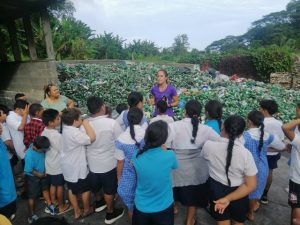 It is easy to feel jaded fighting plastic pollution. Students at Tereora College recently told us that the plastic problem felt too big and overwhelming. On Thursday this week we took students from Papaaroa school to the landfill to see for themselves the true extent of the problem. Again the question came, where do you start?
It is easy to feel jaded fighting plastic pollution. Students at Tereora College recently told us that the plastic problem felt too big and overwhelming. On Thursday this week we took students from Papaaroa school to the landfill to see for themselves the true extent of the problem. Again the question came, where do you start?
The beauty of the Plastic Free July campaign is that small individual steps can be part of a collection solution. It is essentially a challenge to take on whatever you can manage. It might be to give up one single use plastic item, like those pesky straws, plastic shopping bags or clingwrap. Perhaps you might switch your shampoo to the kind that comes in a solid bar or just get better at remembering your reusable water bottle.
Others may go the whole hog and go completely zero waste for July. Whatever you choose to give up is entirely up to you and every little bit counts.This month we intend to showcase local individuals, businesses or schools who inspire us with their incredible waste busting work to keep us motivated to do the mahi we do. We are taking this action because these are the people who help us to carry on, when we might feel like giving up!
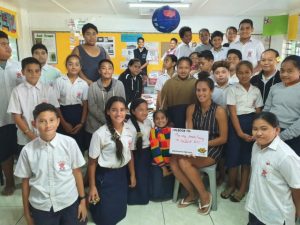
First off the rank is musician Jim Perkins. Jim popped his head into our office at TIS about a month ago and offered to volunteer. Jim’s enthusiasm and creative skills inspired us to give the Plastic Free July Campaign a big push by producing an advert for Plastic Free July.
Together with the valuable expertise of volunteers, Mo from Motone Productions and Tokerau Jim, the advert is now showing on the telly and is also on our You Tube channel – Cook Islands Conservation.
Getting involved in this campaign has inspired Jim to look at his family’s own plastic consumption and make some changes. Jim says he is now more mindful of only buying items that can be reused. Three weeks ago, his bin was full of disposable coffee cups and waste from school lunches like yoghurt squeezies and clingwrap. Now the bin is only a quarter of what it was. Jim also takes his containers to refilleries like Paradise Supplies or the Pak Man Store for refills of their products, including hand soap and laundry detergent. Paper and food waste are composted and Jim’s garden means they eat home grown produce which doesn’t come prewrapped!

Another shoutout goes to Reefside café in Avarua who have always walked the talk and were quick to get involved in Plastic Free July. Reefside offer a 50 cent discount on all hot and cold beverages if you bring your own reusable cup. They are also offering recycled jars for cold drinks. So if you forget your reusable cup, just grab a jar!
When you think about it, plastic is designed to last forever but is only used for a minute. You might spend a short time enjoying your smoothie, then toss the plastic cup and straw. Your vegetables come home in a plastic bag which is then binned not long after. The list goes on.
If you want some extra ideas on how to cut back your waste for July and beyond (whether plastic or otherwise), come and chat to us at Te Ipukarea Society and check out www.plasticfreejuly.org.
What are your Plastic Free July pledges?
Our Environment Through The Eyes Of Our Youth Today
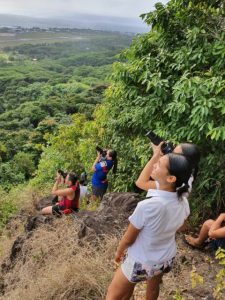
Published July 2020 - written by Alanna Smith
Much of the work that Te Ipukarea Society is involved in includes grass roots awareness raising in the area of conservation and sustainable environmental practices. How we share these messages are achieved through various platforms, from social media, to tv ads, posters and brochures.
Of the various platforms that can be used to get our message across, it is the power of still environmental photos that has always caught my eye. What I like most about photography is that from just a simple click, an image can create an important message that reaches a wide audience. It crosses the language and cultural divide. How these photos are perceived by the individual then has the power to create lasting environmental change at both local or global scales.
Not only does photography have the power to create behavioural change, but the technical skills acquired can also create exciting employment opportunities for our youth, both locally and internationally e.g. from tourism to international platforms such as National Geographic and Time Magazine.
In the hopes of developing some interest within this niche area, particularly with an environmental focus, Te Ipukarea Society with the support of the US Embassy in New Zealand has secured funding to carry out environmental photography classes across 6 local high schools across Rarotonga, Aitutaki and Atiu.
Part of the programme is to engage youth in our local environmental issues, covering landscapes from the ridge to the reef. The positives, negatives, threats and solutions will all be discussed by experts from local NGO’s Te Ipukarea Society, Kōrero o te `Ōrau and also government agencies. Students will then be taught how to use Nikon DSLR cameras as well as the editing skills involved by local photographers Tokerau Jim and Turama Photography.
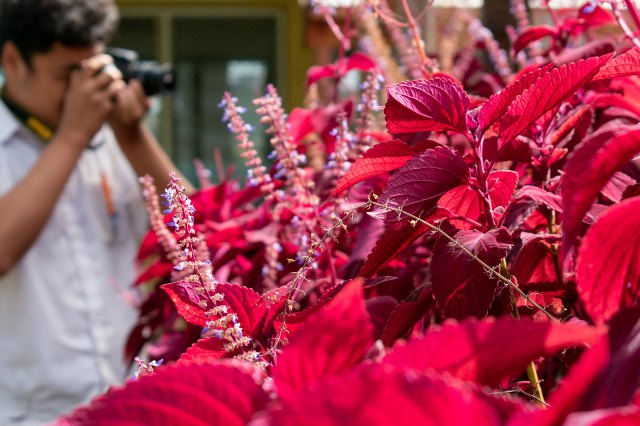
By the end of the programme each student will have then come up with a portfolio of photos of a particular issue or area they feel most connected to. One photo each will then be selected and presented on canvas boards and exhibited for students to share their underlying messages with families and friends.
Our youth today offer a different perspective when it comes to how they see our environment. From having spent some time with local students of all ages, I find it super refreshing to sense our tamariki and mapu are becoming more aware and conscious about our Mana Tiaki values. They are in the great position of having exposure to both old and modern sustainable practices. The future they aspire to needs to be heard, and this programme hopes to offer an alternative platform to public speaking through the use of images taken through the lens of our youth today.
The U.S Ambassador to the Cook Islands, Mr Scott Brown says "We are proud to support this significant and creative project in the Cook Islands happening over the next 3 years in Rarotonga, Aitutaki, and Atiu. We hope the youth in Rarotonga and Pa Enua make the most of this opportunity to learn practical skills. We look forward to seeing the photos they capture of your fabulous country while also promoting our shared value of environmental protection."
Which Self-Isolation Cook Island Bird Are You?
Published April 4 2020 
The birds of the Cook Islands appear to have developed some interesting self-isolation characteristics during the COVID19 code yellow phase. Of the approximately 50 birds found in the Cooks, we examined 10 to see just how they are taking to the new rules and measures currently in place. Can you decide which self isolation, Cook Islands bird personality is you?
Rupe Pacific Pigeon
The one who eats all the hidden quarantine chocolate on the first day of isolation. Hobbies include long scrolls down its phone, singing in the shower, constantly wearing PJs and Netflixing all day. Making TikToc videos is its new thing before winding down on some fermented berries.
Ngotare Chattering Kingfisher
The socialite. Needs that early morning coffee catch up with friends and likes to smile at everyone while out on their daily walks. Despises those roaming dogs that disturb the peace! Likes to be up in everyone’s bubbles and constantly forgets that hugs or kisses are now a no no.
Kota’a Nui Frigate Bird
Its each bird for itself with the Kota’a. The one who pushes to the front of the queue at CITC and panic buys all the corned beef and hand sanitizer. Known for stealing other birds’ food, be sure to watch out for this one.
‘I’oi Rarotonga Starling
Solitary at its finest, introverted and rarely seen. Has been preparing for this moment its whole life. Self-isolation is business as usual but secretly wishes it was full lockdown. Hides from people who show up unannounced, because what kind of monster does that? Decides to put up its own orange flag despite not being sick or vulnerable, it just doesn’t want any visitors. Don’t bank on seeing these guys out and about any time soon, unless they’re out for food.
Kakaia White Tern
The high flyer, super organised and highly efficient – the one who pre orders their groceries from Prime so they can spend an extra 2 hours doing their online Tumuora and Combat Cardio workouts. The first one to volunteer at the Puna and insists on delivering all the Red Cross care packages to the elderly.
Kakerori Rarotonga Flycatcher
Great at self-isolation, does not like to leave their Takitumu Conservation Area (TCA) bubble as they are content with the news coming through Facebook. Having critically browsed through the Rarotonga Community page, it has become quite the contributor to posts. Working from home means more zoom calls for meetings, but always prefers the screen off so it can carry on doing its yoga poses instead.
Toa Moa Rooster
These spicy rosters are typically caught sifting through the neighbour’s plantation sourcing out prized watermelon and dragon fruits. They are known for their loud bike horns that wake the neighbours at ungodly hours. Felt the need to panic buy, so stocked up on rum and Heinies. Already on their second warning.
Kukupa Cook Islands Fruit-Dove
Extreme mood swings. Just wants the kids out of the house. Stays up all night watching romantic comedies. Often asks what day is it? Avoids the supermarket at all costs and lives off food from the dairy. Sleeps until 1pm because “what’s the point anymore?”.
Lulu Masked Booby
The ethical self-isolator. Got home a month ago from travel over-seas and hasn’t left the house since. Very moody and lonely.Misses the spouse, but won’t admit it.
Kuriri Wandering Tattler
Timed it just right. Got the last flight in to self-isolate in the Cooks before the borders shut. Here’s to being stranded in paradise.
So which Cook Islands self-isolator bird personality are you?
TIS launches a Givealittle page to Protect a Little Paradise
Published 04 February 2020
 TIS has recently started a crowd funding page through Givealittle in New Zealand. This will help fund important environmental work in the Cook Islands, helping to preserve this little paradise for future generations.
TIS has recently started a crowd funding page through Givealittle in New Zealand. This will help fund important environmental work in the Cook Islands, helping to preserve this little paradise for future generations.
This page will make it easier for our supporters, both from overseas and locally based, to donate to TIS, with either credit card (international) or online payments (within NZ). All funds received will be put towards core costs of running our organisation and supporting our projects in Rarotonga and throughout the outer islands.
If you believe in our work and want to help us continue, we would be humbled if you could make a donation. Any amount, big or small, is welcome.
We look forward to working with you all in the future to ensure that our voices are heard and our paradise spanning the land and ocean is preserved, protected and healthy!
